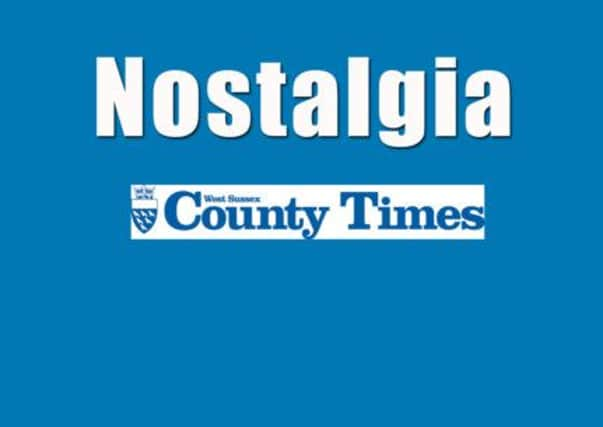30 Years Ago - Second runway at Gatwick ‘not economic sense’


New investigations have shown that a suggested second runway at Gatwick would not make economic sense, West Sussex county planning committee was told at its meeting.
But county planning officer Peter Bryant warned that some of the people opposed to the expansion of Stansted might still push the second runway idea in the future.
Advertisement
Hide AdAdvertisement
Hide AdThe committee approved his suggestion that West Sussex should press home its all-out opposition to any second runway plan. “The sooner we declare our policy and stand by it and push it hard, the better,” said chairman James Williams (Bognor Regis).
West Sussex wants the expansion of Stansted and a fifth terminal at Heathrow, as recommended by an inspector following a major public inquiry, but still to be approved by Whitehall.
Mr Bryant said there were strong bodies of opinion still determined to overthrow the inquiry recommendations.
“My considerable worry is that the whole package will be thrown out because there are enough people unhappy with one bit of it,” he went on.
Advertisement
Hide AdAdvertisement
Hide AdSome people might say that they could always go back to the idea of a second runway at Gatwick. Mr Bryant said the Civil Aviation Authority had now produced some findings from its examination of the possibility of a short commuter runway at Gatwick.
This could require the demolition of two large industrial areas to the south, and probably knocking down the British Caledonian building as well.
There were also operational problems, because for each movement on the second runway ‘a movement would be lost on the main runway’. ‘‘It does not make economic sense at all to do it,” Mr Bryant declared. It was just not a practical proposition, and should not be considered by Whitehall.
New electoral divisions for West Sussex, chopping the county council’s membership from 80 to 71, have just been approved by Home Secretary Leon Brittan. The cut was strongly opposed for a long time by the council, on the grounds that the divisions proposed by the Local Government Boundary Commission would be too big to cover properly. But in the end members agreed to bow to the inevitable.
Advertisement
Hide AdAdvertisement
Hide AdMr Brittan had to take his decision on the changes in time to give county staff a chance to prepare for the elections on May 2, when an electorate of 537,000 will have the right to vote. The elections will cost a record £146,000.
Political parties are already choosing their candidates on the basis of the new divisions, and there is a feeling that big changes are likely, with possibly up to 50 per cent of the membership being newcomers.
Assistant county secretary John Godfrey said: “The changes do give attention to district and parish boundaries, but there are some situations where the boundaries of the county divisions differ from district or borough ward boundaries.” Adur’s representation would be reduced from eight to six councillors, Chichester from 12 to ten, Arun from 15 to 13, Mid Sussex from 13 to 12, and Worthing from 13 to ten. Horsham county councillors would remain at 11, and Crawley’s representation would increase from eight to nine,to reflect the growth in population.
Cuts in Horsham Rural Parish Council’s budget, designed to help the district council keep within Government targets, have come as a blow to Southwater ward, already struggling to find money for its new community centre project. To keep next year’s budget down to the recommended 5.8 per cent, the rural council has had to cut £5,500 from its overall estimates, including £1,500 from the community centre project.
Advertisement
Hide AdAdvertisement
Hide AdSouthwater ward chairman Tony Lardner said “£1,500 might not seem to be much money but every penny would count in a project which could cost over £250,000.”
The rural council expects to be split into three parish councils in 1986, following the report by the Boundary Commission, and Mr Lardner said this would aggravate the financial problems.
Council members opposed the plan mainly on financial grounds. After the split, each council will be able to precept only on its own parishioners instead of on the whole parish as at present.
The rural council agreed to ask the district for nearly £88,000 in the 1985-86 financial year. Although this is an increase of nearly 5.8 per cent, there will not be much difference in the amount charged to each ratepayer in the parish for the council’s purposes. This is because of the growing population, which is expected to result in an eight per cent increase in the product of a 1p rate.